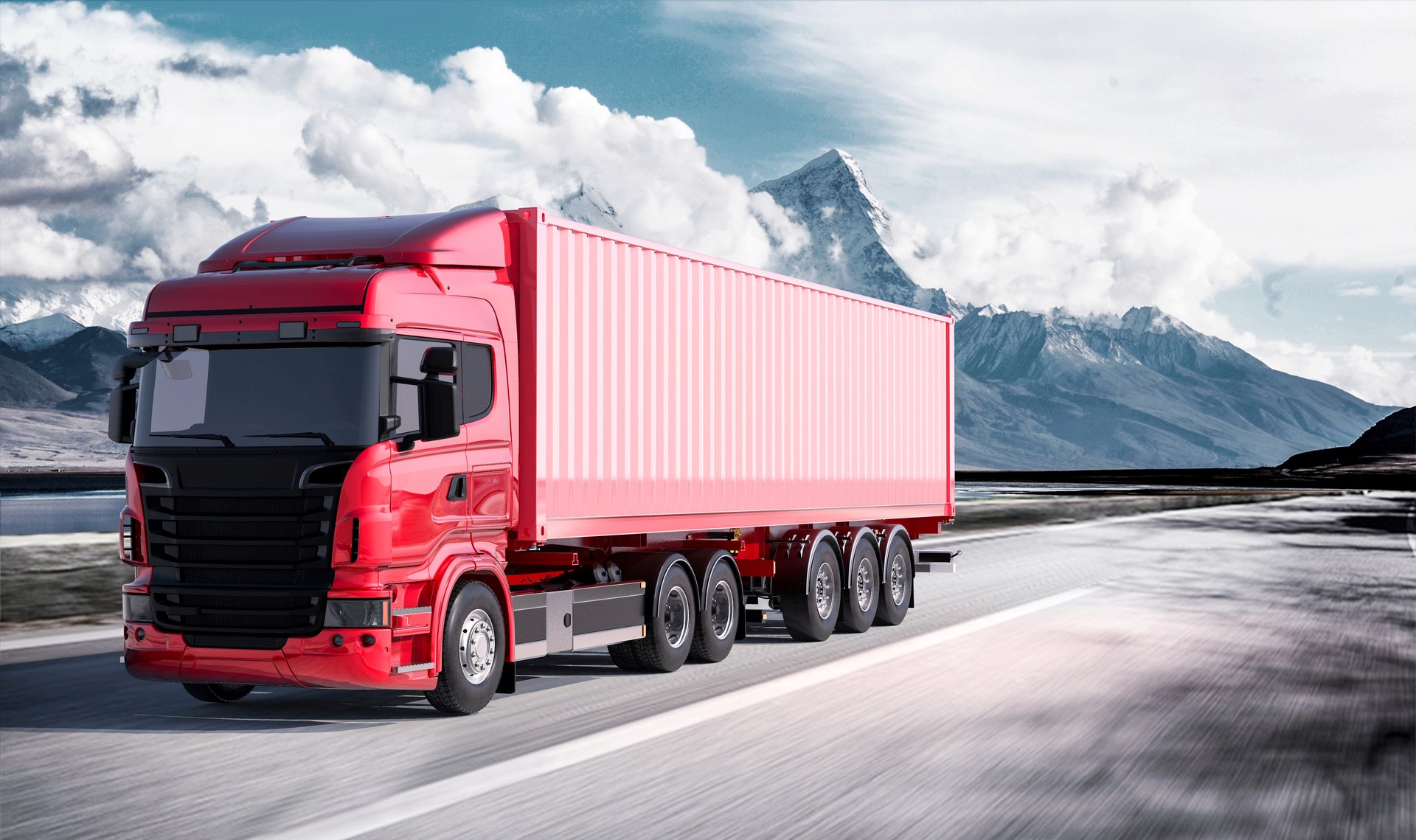The background and significance of the development of new energy vehicles by Thread Technology in the field of City distribution TBOX.

New energy logistics city distribution vehicle TBOX terminal is a smart information TBOX terminal hardware carefully designed by Thread Technology for the urban logistics distribution platform of new energy field. TBOX terminal and logistics platform system are perfectly combined to realize time acquisition, positioning and track query. And the playback of remote power on and off, total mileage, SOC, total voltage, total current and vehicle speed and other information acquisition and control functions, to provide logistics operators with more efficient and intelligent data and positioning information, improve the use and scheduling of vehicles and Management efficiency.
First, the development background
With the rapid development of the social economy, the problem of urban environmental pollution has increasingly become the focus of public attention. The pressure of urban living environment is increasing year by year, and air pollution and congestion are becoming more and more commonplace. The call for maintaining ecological and living environment is receiving more and more attention. The international petroleum energy is non-renewable, making energy conservation and environmental protection a modern urban development. Important factors to consider. According to research and analysis data, most of the pollution sources in cities come from automobile exhaust emissions. Thinking from the current situation of Beijing's environment, the tail gas accounted for 28%-36% of PM2.5 sources and 64-72% of benzene pollution sources. Locally controlled pollution sources mainly come from automobile exhaust, coal burning materials, industrial pollution and dust, which are 31.1%, 22.4%, 18.1%, and 14.3%, respectively. Vehicle exhaust pollution is the most common source of pollution. According to statistics, in the world in 2018, the energy consumption of the transportation sector accounts for more than half of the global oil consumption. The operation of the urban logistics distribution industry relies mainly on transportation, and its energy consumption and carbon dioxide emissions have remained high for 15 consecutive years. To this end, we focus on promoting new energy vehicles, vigorously support the development and production of clean energy vehicle technology, and introduce different government support policies across the country, with the intention of reducing urban air, environmental pollution and solving future energy dilemmas. New energy vehicles can reduce the quality of air and the environment because they can use electricity or cleaner new energy instead of gasoline energy.
At present, China is in the period of rapid urbanization. As more and more people migrate to cities, the city scale and people's economic living standards have grown steadily, and it has also accelerated the rapid growth of urban chain operations and urban logistics distribution. Moreover, the rapid development of the Internet e-commerce industry has also promoted the rapid development of China's urban logistics distribution industry. Urban logistics distribution (hereinafter referred to as “city distribution”) is the most intensive route in the urban logistics distribution industry, and it is also the urban economy. The important part of the organic composition is increasingly promoting the regional and even national economy.
At present, the definition of “city allocation” in the international are: the process of optimizing the logistics and transportation activities under the framework of the market economy for companies engaged in logistics distribution services within the city, in this process, such as the traffic environment, Key factors such as traffic congestion, energy consumption, intelligent dispatching, and matching of people and goods. Despite the rapid development of China's urban roadless distribution industry, for developed countries, the overall situation is still in its infancy, with low level of development and inadequate functions. The following problems exist in the urban logistics distribution and the overall urban logistics distribution industry:
1, the cost is too high
With the development of China's economy and society, the enterprise management of the urban logistics distribution industry has changed from the original extensive management mode to the intensive type. Due to the low concentration of the industry, the logistics distribution of small and medium-sized cities is high in the operation of enterprises. The cost of urban logistics distribution has always been a major bottleneck in the development of enterprises. Urban logistics and distribution companies hope to find more suitable means of transport in urban short-haul freight while ensuring that their business is not affected and that they do not wish to reduce the increase in capacity. Urban logistics and distribution companies hope to reduce the cost of transportation and find suitable transportation tools.
2, cash flow turnover is fast, more nervous
Most of the urban logistics and distribution industry has higher requirements on capital turnover. For example, SF Express's operating income in 2015 was 47.3 billion yuan and net profit was 1.62 billion yuan. The total market value of its enterprises is 43.3 billion yuan, which shows that its capital turnover rate is comparable to other industries. The speed of turnover is much faster. Cash flow is a vital resource for a company, especially for urban logistics distribution enterprises. In the process of operation, urban logistics distribution enterprises need to pay cash for more than 80% of transactions, so the cash turnover rate is high, plus the collection of cash. The management is not strict, and the market for arrears of arrears occurs, which often leads to difficulties in cash flow turnover. Most small and medium-sized city logistics and distribution companies use large sums of money to purchase fixed assets such as transportation vehicles. Although many urban logistics and distribution companies have designated vehicles, most of the cost-bearers who purchase and operate vehicles are mostly Practitioners at the grassroots level of the urban logistics and distribution industry.
3, supporting problems
At present, the research and development of new energy city logistics distribution and distribution commercial vehicles belongs to the divisional stage, the vehicle life is lower than that of the fuel vehicle, the charging facilities are not perfect, the public has a single awareness of the new energy vehicles, and the cultural background leads to low public awareness in the industry. The recognition of new energy city logistics and distribution vehicles is not high, so the widespread commercial promotion, more restrictive factors, the effect is not obvious. How to effectively implement new energy commercial vehicles in the urban logistics and distribution industry has always been a key practical issue of concern to all parties.
Second, the significance of research
1. If the city's logistics and distribution gasoline vehicles can be gradually replaced into electric vehicles, it will help to suppress the decline of urban air quality and living environment quality to a certain extent. According to research data, the carbon dioxide emissions of ordinary cars are between 100-150 grams/km, but for electric-powered clean energy vehicles, the carbon dioxide emissions per kilometer are only 50 grams, which is less than half of the traditional gasoline vehicles. When the gasoline vehicles are replaced, the air quality in the city will increase rapidly.
According to the forecast of relevant data, a consulting company expects that new energy vehicles will exceed 1 billion vehicles by 2050, and carbon dioxide will be reduced by 10 billion tons.
2. Conducive to the sustainable development of the urban logistics distribution industry. In the period of rapid economic development, the large-scale rise of e-commerce has driven the vigorous development of the urban logistics distribution industry, woven into a huge transportation city logistics distribution network for the connection of the economy, and promoted the economic development of many regions and industries. It also brings a lot of convenience to our lives. However, the rapid development of the urban logistics distribution industry has also brought troublesome problems to the city. With the rapid development of e-commerce, Internet shopping has become an indispensable part of people's life, and urban logistics distribution, as a key link in the development of e-commerce, is of paramount importance.
3. Research on new energy city logistics and distribution three-purpose vehicles. In the initial development stage, it will be applied to the application of the business model of the urban logistics distribution industry, and explore the business profit model that it adapts to. In the development of the new energy industry, the key to technology is unquestionable, but a good business model can accelerate the marketization of new energy vehicles. However, domestic creativity in developing new energy vehicles in the urban logistics distribution industry is slightly lacking in creativity. The use of electric vehicles in the urban logistics and distribution industry requires the construction of new business models and industrialization through business model innovation. In a new type of energy vehicle in the urban logistics distribution industry using business model development and application, investors can publicize the interference or subtle influence of the potential customer's consumption concept. Then investors adjust and improve their business models in the process of continuous development and experimentation. Only when more enterprises are constantly innovating and perfecting the new energy vehicle business model, the commercial promotion and development of China's new energy vehicles in the urban logistics distribution industry will enable the participants in the market to obtain corresponding benefits and sustainable The development continues.
4. The policy orientation of the country to the Russian industry is part of the national sustainable development strategy. As early as 2001, the project of new energy vehicle development was included in the “863” major scientific and technological project during the National “Tenth Five-Year Plan” period, and the strategy of taking the gasoline vehicle as the starting point and advancing toward the goal of hydrogen power vehicles was planned. In order to encourage the development of new energy vehicles, the state has implemented a financial subsidy policy for new energy vehicles. On May 19th, the "Made in China 2025" triggered by the State Council also specifically confirmed the continued support for the development of electric vehicles and fuel cell vehicles, and promoted the integration of self-owned brand energy and new energy vehicles with international standards. It is this series of subsidies. China's new energy vehicles are experiencing explosive growth.
The operating enterprise enhances the capacity of new energy vehicles through various means such as joint ventures and leasing with the car manufacturers. In the middle, it is necessary to connect the vehicles to the platform through a software system platform and tracking system, through orders, time, location, electricity, vehicles. The information such as working conditions is collected on the platform, and the vehicles are dispatched quickly, accurately and reasonably according to the principle of function block and distribution processing. This is an important point for developing new energy vehicles in the urban logistics distribution TBOX, which is indispensable.
Domestically, more than 50 new energy city distribution companies, such as cargo zippers, eight horses, caravans, and platinum deer city, have chosen to adopt the TBOX technology of Thread Technology, and combine with their own logistics platform to achieve time acquisition. , positioning, track query and playback remote turn on and off power, total mileage, SOC, total voltage, total current and vehicle speed and other information acquisition and control functions, to provide logistics operators with more efficient and intelligent data and positioning information, improve the car Use, scheduling and management efficiency.
